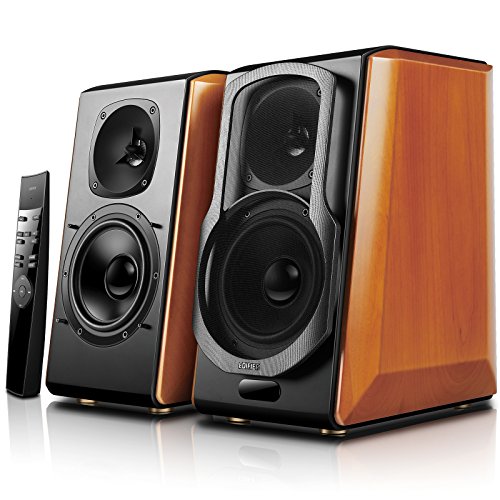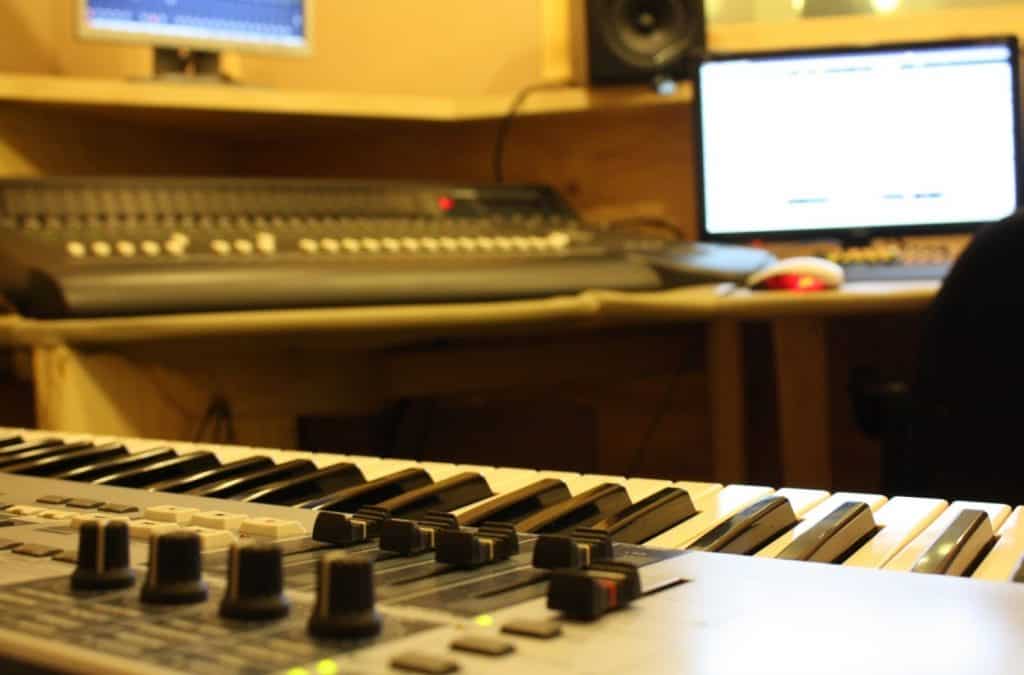As an Amazon Associate we earn from qualifying purchases.
A piano has always been one of the most versatile musical instruments, and this is truer with digital pianos. If you feel like great music can flow through you, a digital piano would prove a very good channel for it to do so. Especially if you pair it with the right studio monitor.
at a glance: our top 4 picks for studio monitors for digital piano
Music is art for the ears. Just like a great visual art piece has to go through your eyes to your heart, great music has to pass through your ears. No matter how perfectly you plan your notes or how mathematically magical they are, if the end piece is not pleasing to your auditory senses, it cannot be classified as great music.
You have to have a clear feel for the music you are making. If you cannot hear it with clarity, if the sound is wrongfully enhanced, muffled or pitched, it will not be the true representation of your art. This is why it is so important that your digital piano has the best sound output.
QUICK OVERVIEW: OUR TOP PICKS FOR STUDIO MONITORS FOR DIGITAL PIANO
| Image | Product | |
|---|---|---|
Our Top Pick  | Yamaha HS8 Power Studio Monitor
| View On Amazon → |
 | Edifier S2000Pro Powered Bluetooth Bookshelf Speakers
| View On Amazon → |
 | JBL Professional 305P MkII
| View On Amazon → |
 | Mackie CR4 4-Inch Studio Monitor
| View On Amazon → |
Table of Contents
Why Use Studio Monitors for Digital Pianos?
This is a question many musicians and sound editors ask. Why choose a monitor instead of an amp or simply go with the piano’s built-in speaker system if you are recording? Or maybe a headphone would be a better choice to listen to the music produced by a digital piano? Then why monitors?
The answer is simple: Accuracy and quality.
What can alter the choice though, is what you are using your digital piano for. If you play for friends and company, an amp or a speaker system would be sufficient. If you simply love playing and maybe record for fun, a digital piano’s internal speakers are good enough.
But if you are professionally making music, and recording either in a home or professional studio, a good quality studio monitor is your best choice to couple with your digital piano. The reason is that the monitor will let you listen to the music from your digital piano “exactly as it is”.
This is one of the reasons many people find monitors a dull and relatively boring choice. This cannot be farther from the truth. The accurate sound of the music being produced can be fine-tuned to its most perfect form.
Studio monitors let you produce a ‘flat sound’. While being a true representation of your music, it is also like a blank canvas, where you can add the colors and strokes yourself. It is especially helpful when you are mixing music.
It’s also a misconception that music from a studio monitor doesn’t sound as beautiful as it does from the speakers. The fact is that a studio monitor lets you experience the sounds produced by a digital piano (or any other instrument) in its truest form. The range of sound and frequency allowed by studio monitors is far superior to any headphones or amps.
Best Studio Monitors for Digital Pianos
If you have decided to go with studio monitors for your digital piano, the question then is, which one? There is a whole range of studio monitors to choose from. Whether you have a professional studio with extensive requirements, or a home studio and a limited budget, there is a perfect fit for everyone.
Note that all the studio monitors suggested below are active studio monitors, which means they have their own amplifier. Passive speakers do not have their own amp, which makes them a bit harder to handle for new users, though many seasoned professionals prefer them as they allow additional control.
It is also important to understand that most studio monitors come with two drivers. These units, called woofers and tweeters, are responsible for the frequency of the sound output. This is called a 2-way monitor configuration. Woofers handle low and mid-range frequencies while tweeters cover the high and mid-range ones. Some monitors allow an addition sub woofer for mid-range frequencies.
1. Yamaha HS8 Power Studio Monitor

One of the best in the running, the HS8 from Yamaha comes from the proud line of legendary NS10s. A chip off the old block, albeit a very high tech and improved chip. Compared to its smaller and just as successful brother, the HS5, the Yamaha HS8 is relatively large. With the powerful output of 120W, they are sized for bigger rooms and halls.
For the best, accurate and honest sounds, the HS series has always been the choice of the industry. As one of the best nearfield reference monitors, the HS8 delivers on its promise of prestige.
It has a frequency response reaching up to 30 kHz, and a perfectly matched amp. This lets the HS8 produce consistent, highly accurate output, making it perfect for digital piano recordings. It doesn’t alter the sound, but with its clarity and true representation of the sound, helps you find and fix the problems.
Features:
- Bi-Amplified
- 38Hz-30kHz frequency range
- Input: 1 x XLR, 1 x 1/4″ TRS
- Advanced noise reduction technology
- Two drivers: 75W – 8″ cone woofer and 45W – 1″ dome tweeter
If the HS8 seems too powerful for your use, you may want to check out the Yamaha HS5 monitor.
2. Edifier S2000Pro Powered Bluetooth Bookshelf Speakers

This is also a high powered choice for a monitor. Perfect for large studios, small halls or other mid to small size enclosed venues. Its highlighted feature is its use of aluminum for driver cones, through which you will be able to boost the limited high notes of your keyboard for a higher and clearer sound.
Bluetooth connectivity allows for an easier use. Also makes it convenient for simply enjoying them as regular speakers. The unit is quite beautiful to look at too.
The aluminum cones, as well as the flat diaphragm, make the sound clearer and characteristic. This studio monitor is the 36th bestselling bookshelf unit on Amazon.
Features:
- Bi-Amplified
- 48Hz~20KHz frequency range
- Comes with Optical/Coaxial Inputs in addition to the regular Aux inputs in the back
- Bluetooth allows for connectivity with mobile devices
- 5.5” woofer and a planar diaphragm tweeter driver
These neat features, coupled with a reasonable price tag, make the Edifier S2000Pro a very desirable studio monitor.
3. JBL Professional 305P MkII

If you want to try something with quality similar to Yamaha studio monitors, but with a relatively lower price tag, the JBL 305P MkII is your thing. Built with the next-gen transducers, the third generation JBL monitor is great combination of class and quality.
New tech has especially enhanced low frequency linearity, and JBL’s patented Image Control Waveguide makes for a broader sweet spot. It means that you will be able to hear the perfectly clear and crisp notes of your digital piano in almost any room or space configuration.
The woofers in these are able to produce an exceptional deep base response thanks to JBL’s trademark Slip Stream low frequency port. A built-in equalizer also makes it a good choice for thorough fine tuning.
Features:
- Dual integrated, custom built class-D amplifiers.
- 43 Hz – 24 kHz frequency range
- Input: Balanced XLR and 1/4″ TRS
- Allows an enhanced low frequency range if coupled with another JBL subwoofer
- A 5” woofer and 1” tweeter with advanced transducer
This high tech JBL 305P MkII is a great choice for a wide array of studio setups.
4. Mackie CR4 4-Inch Studio Monitor

Closing the list is a fine little Mackie CR4. This small studio monitor brings a big frequency range with it. It has a smooth waveguide design that allows balanced dispersion and clarity across the entire acoustic range. This makes it a perfect choice for digital piano players recording in home studios.
The coolest thing about Mackie CR4 is its easy usability. Despite packing a lot of gadgets and many high tech features, it is very easy to set up and use. The speakers are interchangeable, which is a great advantage for novice users. This is a great beginner unit for people who are just starting to record their music.
Features:
- Single Amplifier
- 70 Hz – 20 kHz frequency range
- Input: Aux and 1/4” left/right (instrument) input
- Allows Smartphone connectivity
- 4” woofer and 0.75” tweeter drivers
This cool little Mackie CR4 is great professional studio monitor and high-end speaker double.
Conclusion
Which studio monitor you choose for digital piano recordings, depends a lot on your budget, need and specific features. It may seem like tedious task to do all this research when all you want to do is make music.
But just like the right instrument, the right studio monitor can be crucial to the quality of music you make and produce for your listeners. You will be glad that you did the research, once the clear and honest sound of your digital piano notes reaches your ears.
Amazon and the Amazon logo are trademarks of Amazon.com, Inc, or its affiliates.
